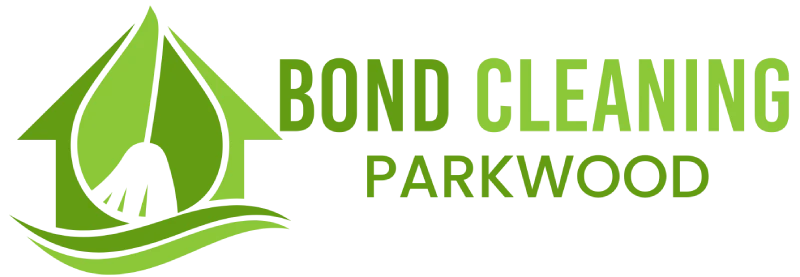Why Are Microfiber Cloths the Best Cleaning Equipment?

Microfiber Cloths: The Ultimate Cleaning Tool for Every Surface
Have you ever been cleaning a surface and left some streaks behind on your face? Or marvelled at how Uber-professionals clean windows up, with not a drop of cleaner. What would you do if we mentioned the secret weapon doesn’t lie in some complicated chemical process- it is just a simple piece of cloth?
Hi, microfiber cloths! You are small but powerful enough to fill the need in your cleaning regimen. And these are not ordinary dusters and rags. They collect dirt, soak up liquid like a megawatt sponge, and nothing is left behind except shine. This blog will explain precisely why microfiber has become the standard in the cleaning industry and among the home clean freaks. Brace yourself to discover why these cloths represent such a special fabric and hear the microscopic magic they perform, and the reason for making an exchange with them may be the best cleaning solution you’ve ever had. Want to have the real thing?
What is Microfiber?
Microfiber is also an artificial material produced by mixing polyester and polyamide (nylon). Its ultra-fine fibres make it unique, so each fibre is approximately 1/100 the size of human hair. This small size provides a large surface area and thus makes it very soft and flexible, such that it fits into deep crevices and cracks that cotton cloths cannot fit into.
One square inch of microfiber cloth has a few hundred thousand fibres within it. This tightly knit mesh forms a net that, in effect, catches dust, dirt, grease and even bacteria- without using chemical cleaners. That is why Bond Cleaning Parkwood has become a necessity in which carefulness and traceability are fundamental. Be it in the bathroom cleansing even the hardest grime on tiles, or buffing your kitchen countertops until they are! Quarters, microfiber cloths will make your properties shine and inspection-worthy.
Arrangement Of Microfiber Cloths
Equal proportions of a mixture of polyester and polyamides (typically nylon) are used to compose microfiber cloths. To make these polymers, they are melted and forced through tiny holes to be separated and form wonderful fibres, up to 10 to 50 times finer than a strand of human hair. The resultant fabric has fibres about the size of bacteria (15microns-5microns) and bigger than most viruses, which enables it to trap dirt, dust and microbes. Microfiber cloths have been the ultimate cleaning/product because they clean a multiplicity of surfaces, do not need fiercely harsh chemicals, and have unparalleled absorption and dust capture capabilities.
Cleaning Care of Microfiber Cloths
Microfiber clothes are simple to wash. With proper care, a fabric can last for years and be effective in cleaning. The following are some of the maintenance practices for ensuring microfiber is clean. After each use, dust the cloth and wash it thoroughly with warm or even hot water. If the fabric is filthy, clean it for one or two minutes or until the water clears off. Each week, wash all the wipes, towels, dusters, mops, etc., made out of microfiber cloth in the washing machine. Apply a natural soap, like liquid castile soap. Skip the bleach and softeners. Only wash them with soap and water. Place a cloth in a dryer and leave it to hang until dry. Make it a habit to wash your clothes made of microfiber fabric at least once every week.
Sometimes, when you have old microfiber clothes that no longer work or even those that smell, you just take a container full of water and add baking soda. Soak the clothes in this solution and then boil them for 15 minutes. Wash in warm water till the water clears. The clothes get dry and are as good as new.
Uses of Microfiber Towels
Microfiber towels can be used for dry dusting or wet cleaning. They are utilised in homes and commercial rooms to clean. The few common uses of microfiber cloths have been mentioned below. Nowadays, microfiber cloths are found in all homes. They are staple cleaners that can be used.
- The cabinets and the cupboards
- Chrome and stainless steel fixtures
- TV screens, tabletops, shower walls, and irons are some of the surfaces made up of glass.
- Floors, surfaces, and objects of marble, granite, tile, wood, etc.
- Electrical items
- Good or fragile merchandise and antiques
- Kitchen appliances include ovens, Microwaves, dish-washers, BBQs and so on.
- Decorations of upholstery and furniture
Microfiber cloths can be used to clean virtually every object in your house. They are superior to conventional cleaning materials, such as towels or cotton. Healthcare Industry Since microfiber cloths can be washed and are antibacterial, they can be used in healthcare, such as hospitals and other places like medical centres, chemist shops, clinics, nursing homes, out-patient care centres, etc.
Big and steam mops
Disposable wipes
Towels
Pads
Dusters
Before microfiber cloth products were manufactured to clean the whole household, the automobile industry used them to clean, polish and buff cars, trucks, bikes, vans and other vehicles. The fact that the microfiber cloth leaves behind no streak and a pickup of oil or grease residues is perfect for the tool. Most of the end-of-lease cleaning businesses promote the use of microfiber cloths and cleaning materials. Expert cleaners employ microfiber cleaning products that make a lot of difference in the field.
In the thorough professional cleaning services, such as spring cleaning, end of lease cleaning, carpet cleaning, etc., are to be provided. They have minimised the consumption of cleaning items and the time and labour that end-of-lease cleaners have to spend. End of lease cleaners go to the extent of using microfiber clothes and disposable cloths to clean off the sweat and grime from their body as part of hygienic cleaning.
Wrapping Up
The most efficient cleaning tools are microfiber cloths due to their functionality, low costs and performance. They do not harm the environment and minimise the materials and machines consumed to clean various surfaces and objects. Automobile companies,end-of-lease cleaners, households and healthcare facilities are some of the most preferred users. Everyone can easily and safely use microfiber cloths.



